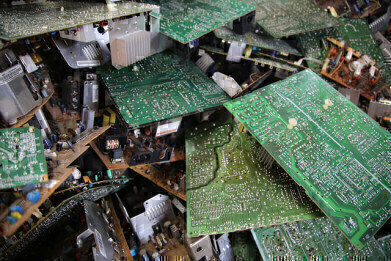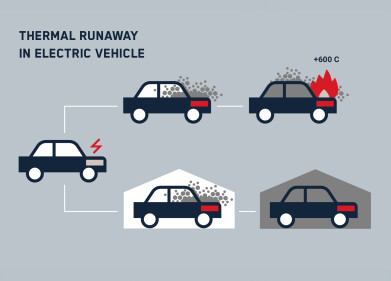Health & Safety
Which Countries Produce the Most E-Waste?
Jun 25 2018
In today’s increasingly technology-dominated world, it seems that we’re always on the lookout for the next upgrade on our mobile phone, the next games console to distract us from work and the next gadget to monitor every waking (and sleeping!) aspect of our daily lives. But what happens to the old electronics once they have been replaced with the new?
While a percentage of these computers, smartphones, printers, DVD players, TVs and other electronics are recycled (45% in the UK, 40% globally), the majority of them simply end up as e-waste in a landfill. This is not only a huge waste of precious resources, but also a potential danger as the toxic metal elements found in e-waste can be damaging to the environment and to our health.
In fact, prolonged exposure to the chemicals emitted by e-waste can increase the incidence of a variety of health complications, including damage and disorder of the nervous system, kidneys, brain, heart, liver, lungs, blood system and skin.
The global e-waste leaderboard
In total, it’s estimated that almost 50 million tons of e-waste will be generated in 2018. China lead the way, with 7.2 million tons per annum, while the USA (6.3), Japan (2.1), India (2.0) and Germany (1.9) trail behind. However, since China and India have the two biggest populations worldwide by some distance, their e-waste generation is not quite as troublesome when viewed in terms of per-capita pollution.
In fact, nine of the top ten e-waste producing countries in the world by per capita pollution are in Europe and the outlier is the United States. Surprisingly, Nordic nations are top of the pile, with Norway, Iceland, Denmark and Sweden occupying four of the top seven positions, indicating that the high standards of living and disposable income in these countries allows people to upgrade their technology more frequently than elsewhere.
The importance of recycling
Of course, the flipside to this statistic is that European nations are more likely to recycle their old electronic goods than those in other parts of the world. It’s estimated that approximately 47% of e-waste produced in Europe is recycled, which still leaves considerable room for improvement but is markedly better than the global average of 40%. Some countries in particular have much work to do to address their e-waste disposal practices.
For example, official statistics indicate that India currently recycles less than a quarter of its e-waste. Last year, the country generated approximately two million tonnes of the stuff, but a mere 438,085 made its way to recycling (just 22%). Indeed, a recent report suggested that the real percentage is far lower at just 5%. Clearly, much work is required to educate the populace on the importance of recycling e-waste, though the country is slowly beginning to become more environmentally conscious. This is evidenced by the major success of its recent emissions monitoring conference.
Digital Edition
AET 28.2 April/May 2024
May 2024
Business News - Teledyne Marine expands with the acquisition of Valeport - Signal partners with gas analysis experts in Korea Air Monitoring - Continuous Fine Particulate Emission Monitor...
View all digital editions
Events
Jul 30 2024 Jakarta, Indonesia
China Energy Summit & Exhibition
Jul 31 2024 Beijing, China
2024 Beijing International Coal & Mining Exhibition
Aug 07 2024 Beijing, China
IWA World Water Congress & Exhibition
Aug 11 2024 Toronto, Canada
Aug 25 2024 Stockholm, Sweden and online









.jpg)








